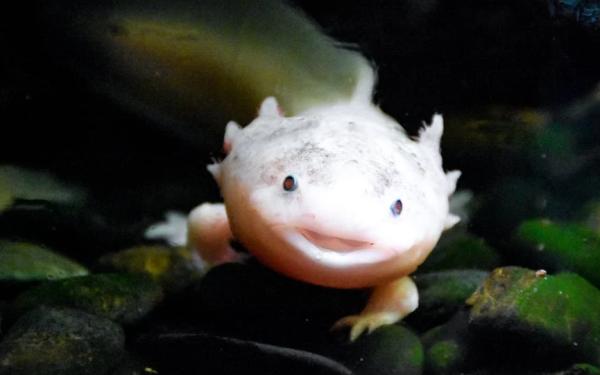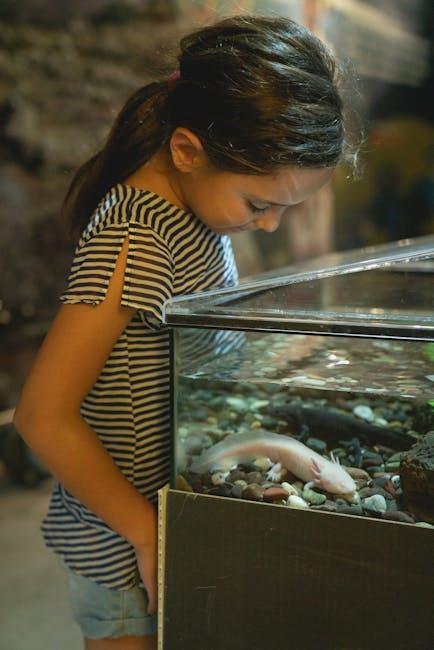Where Does the Axolotl Live? - Habitat and Distribution



See files for Axolotis
The axolotl (Ambystoma mexicanum) is a unique amphibian native to Mexico. Unlike most salamanders, axolotls retain their larval features throughout their lives, sporting feathery external gills and a perpetually youthful appearance. This fascinating characteristic, known as neoteny, makes them a subject of scientific interest and admiration. Understanding the axolotl's habitat is crucial for its survival. These obligate aquatic salamanders have specific requirements for water quality, temperature, and vegetation.
This AnimalWised article explores the habitat and distribution of axolotls, along with the threats they face.
Distribution of the axolotls
Axolotls, scientifically classified under the genus Ambystoma, are fascinating amphibians with a specific species known as Ambystoma mexicanum. These creatures are native to various aquatic habitats in Mexico, primarily in the basin of Mexico City.
Historically, axolotls had a broader distribution, inhabiting lakes and wetlands across the Mexican Central Valley. However, due to habitat loss and water pollution, their range has significantly diminished. Today, they are predominantly found in Xochimilco, an area south of Mexico City known for its unique agricultural system called chinampas, which consists of artificial islands.
Urban development, agricultural runoff, and sewage pollution have led to the degradation of Xochimilco and other wetlands where axolotls once thrived. Lake Chalco, another significant habitat for axolotls, has been drained, further limiting their habitat availability. Consequently, axolotls now struggle to survive in the remaining canals of Xochimilco.
Due to these threats, axolotls are classified as critically endangered in the wild. Conservation initiatives are crucial for protecting the remaining populations and preserving their genetic diversity. Efforts are underway to mitigate habitat destruction, control pollution, and prevent the introduction of non-native species.
Did you know that axolotls reproduce through a process of internal fertilization? If you're interested in learning more about axolotl reproduction, be sure to read this other article.

Habitat of the axolotls
A habitat is the natural environment where a particular species lives and thrives. It acts as a life support system, providing everything an organism needs to survive, from food and water to shelter and suitable breeding grounds. Without a habitat that meets these specific requirements, a species' population will inevitably decline or even disappear.
In the case of axolotls, they are obligate aquatic salamanders. This means they retain their larval features throughout their lives and never develop lungs for breathing air. This unique characteristic heavily influences their habitat requirements.
Because they rely on external gills for respiration, they require freshwater environments with good water quality and sufficient oxygen levels. Their external gills, delicate and feathery, are specifically adapted for extracting oxygen directly from the water. Polluted water, often a consequence of agricultural runoff and sewage discharge, educes oxygen levels and introduces harmful chemicals, making it difficult or even impossible for axolotls to breathe.
Axolotls also thrive in cool temperatures, typically between 16-20°C (60-68°F). Rising water temperatures, a consequence of climate change, create stressful conditions for these creatures and can even impact their breeding success.
Finally, as nocturnal creatures sensitive to light, they need an abundance of shelter and hiding places within their habitat, such as plants, rocks, or other structures, to avoid predators and minimize stress. Submerged plants, like water weeds and lilies, provide essential hiding places, allowing axolotls to camouflage themselves from predators and reduce stress levels. These underwater havens also serve as vital breeding grounds, as axolotls attach their eggs to aquatic plants.
Here are some examples of axolotls and their habitats:
- Mexican Axolotl (Ambystoma mexicanum): found primarily in protected areas in Mexico, this species inhabits aquatic environments with diverse vegetation, crucial for reproduction.
- Mountain Stream Axolotl (Ambystoma altamirani): endemic to Mexico, particularly Morelos and the Federal District, it resides in smaller permanent streams within pine and oak forests.
- Tarahumara Axolotl (Ambystoma rosaceum): found in high altitude habitats in Mexico, including pine and oak forests, shallow streams, and artificial ponds used for livestock. Some individuals may become terrestrial.
- Blue-Spotted Salamander (Ambystoma laterale): found in Canada and the United States, this species inhabits swamps and marshes with sandy or clay soils. Larvae are aquatic, while adults may reside underground.
- Long-Toed Salamander (Ambystoma macrodactylum): present in Canada and the United States, it reproduces in various aquatic environments such as ponds, lakes, or streams. Adults typically reside underground.
- Marbled Salamander (Ambystoma opacum): found in the United States, it inhabits wooded areas near swamps and ponds, as well as rocky areas and dunes. Adults are terrestrial.
- Alchichica Axolotl (Ambystoma taylori): endemic to Puebla, Mexico, it primarily inhabits Lake Alchichica, preferring deeper waters.
- Smallmouth Salamander (Ambystoma texanum): native to Canada and the United States, it resides in various forest types, grass prairies, and cultivated areas. Reproduction occurs in aquatic environments, while adults may live underground.
Each species has specific habitat requirements, emphasizing the need for conservation efforts to preserve their ecosystems. If you're interested in learning more about axolotl biology, including their ability to survive outside of water, read this other article.

Areas designated for axolotl conservation
Various species of axolotls inhabit protected areas to ensure their survival due to their endangered status. Here are the locations where these axolotls are found:
- Mountain Stream Axolotl (Ambystoma altamirani): Lagunas de Zempoala National Park, Cumbres del Ajusco National Park, and Desierto de los Leones National Park.
- Zacapu Axolotl (Ambystoma andersoni): Zacapu Lagoon.
- Champala Salamander (Ambystoma flavipiperatum): Sierra de Quila Protected Natural Area.
- Río Frío Axolotl (Ambystoma leorae): Iztaccíhuatl-Popocatépetl National Park.
- Lerma Axolotl (Ambystoma lermaense): Ciénagas de Lerma Flora and Fauna Protection Area.
- Mexican Axolotl (Ambystoma mexicanum): Ejidos of Xochimilco and San Gregorio in Mexico City.
- Toluca River Axolotl (Ambystoma rivulare): Nevado de Toluca National Park and the Monarch Butterfly Biosphere Reserve in the Chincua Sanctuary.
- Pink Axolotl (Ambystoma rosaceum): Cerro Mohinora Flora and Fauna Protection Area and Campo Verde Flora and Fauna Protection Area.
- Smallmouth Salamander (Ambystoma texanum): Several protected areas in the United States and the Fish Point Nature Reserve of the Canadian Provincial Park System.
- Mole Salamander (Ambystoma talpoideum): Protected forest areas in the United States.
These protected areas play a crucial role in conserving the habitats of these endangered axolotl species.

Axolotls in captivity
Axolotls have become popular choices for home aquariums. However, providing a suitable captive environment for these aquatic salamanders necessitates a well-informed approach.
The transition from a vast natural habitat to a captive aquarium requires replicating key aspects of an axolotl's preferred aquatic environment. A well-maintained freshwater aquarium equipped with a filtration system is essential to ensure clean and oxygenated water. The water temperature should be consistently maintained within the ideal range of 16-20°C (60-68°F).
Mimicking the natural habitat also involves incorporating hiding places. Live plants or carefully chosen aquarium decorations that provide shelter are crucial for reducing stress and allowing axolotls to exhibit their natural nocturnal behaviors. The aquarium floor should be bare or contain smooth substrate like sand or aquarium pebbles, as axolotls can ingest larger objects and become impacted.
Keeping axolotls in captivity comes with its own set of challenges. One significant concern is their sensitivity to water quality. Regular water changes and diligent aquarium maintenance are paramount to prevent ammonia build-up and ensure optimal oxygen levels. Additionally, axolotls are not particularly social creatures and should be housed alone or with tank mates of similar size and temperament. Since they are predatory by nature, keeping them with fish is not recommended, as they may try to eat smaller tank mates.
Despite the challenges, captive environments can offer certain benefits. Axolotls are critically endangered in the wild due to habitat loss and pollution. Captive breeding programs can play a vital role in species conservation by maintaining healthy populations and potentially contributing to reintroduction efforts in the future. However, such programs require expertise and a commitment to proper animal husbandry practices.
Keeping axolotls as pets can be a rewarding experience. However, the responsibility of providing a suitable and healthy captive environment with proper care should never be taken lightly. If you're interested in learning more about axolotl care, including their dietary requirements, read this other article.

If you want to read similar articles to Where Does the Axolotl Live? - Habitat and Distribution, we recommend you visit our Facts about the animal kingdom category.
- SEMARNAT (2018). Action Program for the Conservation of Ambystoma spp Species, SEMARNAT/CONANP, Mexico. Available at: https://www.gob.mx/cms/uploads/attachment/file/444128/PACE_Ambystoma2.pdf
- IUCN (2021). Genus Ambystoma . Available at: https://www.iucnredlist.org/search?query=Ambystoma%20cingulatum&searchType=species









